UPDATED: GYI - The Downward Full Court Press Continues
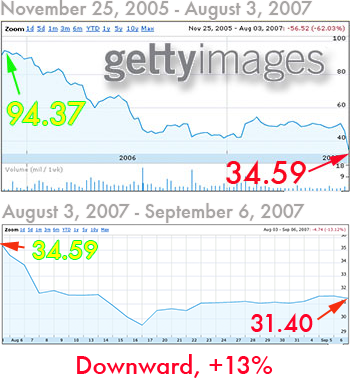
Here's a little "flying at 33,000 feet" perspective on asset aquisition, moved a bit into laymen's terms.
When you are a company like Getty Images, which has previously stated (pre-iStockphoto aquisition) that your rights-managed royalty-free library was generating an average image license of roughly $190 an image, that's a metric you use as you look at other libraries. If then, you consider that for every 100 images you have in your library, 1 will sell per year, (and that's a rough guestimation, to be sure, but, it's functional for this example), you then determine that a library with, say, 1,000,000 images will generate 1.9 million in revenue, per year, generally speaking. You then must factor in the aging of the asset (i.e. a photo of a cell phone user has a lifespan of about 3-4 years because the models/sizes change), to the end of the "current" life of the photo. The photo then has a value as a "historical" image for the remainder of the life of the copyright. These are complicated metrics to be sure, and you definately then hire an actuary to take a multitude of factors in as you properly value a company. Don't worry though, the company you're considering buying has actuaries of their own, doing the same thing. I'd find it facinating to be in a room with competing actuaries as they debated the nuances of a companies' valuation.
I would, however, suspect that the acutaries did not take into consideration that the acquiring company would canibalize it's own assets by cutting uses to $49. I just don't comprehend that thought process. Essentially, at whatever volume you were previously licensing imagery for in that category, you are slashing the average valuation, and expecting to make it up in volume.
Businessweek has taken note, weighing in on Getty two days ago in their article Moving Pictures.
The article notes that "stock has become big business in a remarkably short time. But that status seems precarious—and Getty and its photographers are straining to adapt." Getty is, in fact straining to adapt as the percentage of images sold out of 100 (as noted above) diminishes. When you have 15 images of, say, an American Flag flying during a winter storm, and , after an aquisition of another company, you now have 22, your "images licensed per 100" figure diminishes. Further, photographers are struggling to adapt because the revenue they relied upon is being slashed (more on that below), and photographers' willingness to continue to be creative is diminishing.
The article highlights this point, suggesting "It's no wonder that photographers and stock buyers gripe that Getty grabs profits where it can, leaving everyone else a skinny slice...(p)hotographers have felt Getty's influence in the way they work and in how much money they take home. "There are a lot of strong-arm tactics involved in getting lower fees from photographers...(t)he industry standard cut for photographers used to be 50 percent," citing one producer of photography, "It's now 20 to 40 percent. People sign with market leaders like Getty to make it up in volume." For rights-managed images, the average commission at Getty is now closer to 33 percent, according to the company's latest annual report.
Fortunately, I am still recieving 50% from my agency relationship. Examples abound in the article, with Jim Pickerell mentioning one photographer's experience in particular. Jim is then cited in the article - "Jim Pickerell, publisher of the trade magazine Selling Stock, adds, 'The collections will likely grow larger and larger, so the odds of any images being licensed have become less and less.'", which just reinforces my point above, and I am certain that Jim and I are not alone in this observation.
Betsy Reid, Executive Director of the Stock Artists Alliance is quoted as saying "We see seasoned photographers leaving stock because of reduced opportunity, but also because of reduced enthusiasm. They're unlikely to be replaced by a new generation of pros, nor will their level of imagery be replicated by amateurs," which is so true. In order to have creative contributions, you must incentivize the creators, which was the original basis for copyright in the US - the notion that, in order to incentivize people to produce creative works, you must - for a limited time - give them a monopoly on the uses and fees charged to others to use, those images. This revenue is needed to sustain them as they do more. As photographers see their artistic creations devalued and used by corporate America everywhere, and, in the end, they are getting 33%-50% of the $49 stock sale, that's about $20-odd dollars or so, and that level of revenue is not going to sustain them as they try to create more.
The article goes on to say "While Getty appears to be unshakable, its future may well be at the mercy of such changes in the business." Indeed. It will be at the mercy of creatively fatigued photographers - the ones that are the top creative producers of the recent past, and the allowance of the commoditization of their own imagery. Last year, JDK said "If someone's going to cannibalize your business, better it be one of your other businesses,", and that's not a functional concept when what is canibalizing your business that investors own and trade, is worth less than pennies on the dollar. It's one thing to say this when you're allowing Jeep Liberty sales to eat into Jeep Cherokee sales, as the Liberty is less expensive to produce and sell, but this just does not work when it comes to imagery! When you earn $0.80 gross (before the backend costs to bill for that and house the content), and you used to generate $95 gross (that'd be 50% of the $190 average), that's going to require you to make over 1,000 additional image sales - per image - just to break even. The article suggests, as it regards Getty and iStockphoto "It's still a potentially dire situation for both agencies." Yes, it is.
Don't believe them (or me)? The articles' closing sentiments include a quote by Washington DC's Design Army co-owner, cited at the beginning of the article: "Design Army's Pum Lefebure notes that she prefers the steep discounts offered by iStockphoto and others: "If we want an image of sky or grass, I'd rather spend $10 than $350." That's from the buyer's mouth, based upon experiences over time. That's a 97% reduction in costs for them. I just can't see, with losses like that for the creatives who produce the content, and the valuation of the company, that anywhere close to that can be achieved by making it up in volume.
Getty touted the news, suggesting it was revolutionary in their PR newswire announcement. It says, in part, "The new product enables customers producing content for the rapidly expanding online market to use award-winning imagery from the broadest and highest quality collection in the world in their online media and advertising." Now, maybe it's just be, but shouldn't "award-winning imagery" that is from the "highest quality collection" carry a premium? Shouldn't photographers who produce that caliber of imagery be rewarded at net-fees to them of more than $20-$25 a piece? The announcement goes on, "Getty Images' new web-resolution product enables customers to access the entire breadth and depth of its collections -- even the premium collections -- for their online media and advertising campaigns...Royalty-free imagery may be licensed online today with rights-ready and rights-managed online licensing in the coming weeks." So, this isn't just their old stock images, or ones that aren't selling well. This is the whole archive.
What do others think of this concept? Simon Stanmore, on his blog,
Commercial Photography Commentary - News, views & techniques for advertising & corporate communications photography
, notes in this entry, titled $49 = 1-10 year, Worldwide, Commercial, License to Use, "Ultimately all RM licenses may be devalued across-the-board by this development, especially when you consider the steady shift away from print toward digital media for advertising." Simon echoes the sentiments noted above:
"There may be another repercussion: A negative reaction from Getty’s mission critical suppliers – Photographers... A list price of $49 for a 1 year Worldwide RM commercial license may just be the straw that breaks their bleeding backs.How is this going to flesh out? Well, a review of the timeline is in place. Revenue is booked by GYI either at the time of the image's license/sale, or when they recieve the payment. Assuming the latter is the case (i.e. the longer timeframe), GYI's quarterly call was at the beginning of August. Their third quarter announcement will be sometime around the end of October. You do the math - it'll take a week or two to have the lion's share of the images they want to make available at $49, and they'll see a spike the first few weeks in that income, collected within 30 days means that they will be able to report increases in volume, and attribute any diminished gross revenue to this new model, and extend out the bad news that is their true state of valuation/stability one more quarter. The statements will be something like "we look to have a modest-growth fourth quarter as new clients come online as a result of our newest pricing model. We are already seeing increased interest we expect will continue into the next quarter, and the future. We are excited about the growth opportunities and potential this new client base will bring.". If the analysts are paying attention when he says that, hopefully there will be some challenge about the overall valuation of the company based upon these new metrics, and the insights that Businessweek, Pickerell, Reid - and clients like Design Army, bring to the fore.
Either vocally or silently many of the once committed, still talented photographers who selected Getty to be their distribution partner may move on to where they feel their imagery is respected and profession better understood. And being predominantly creative individuals that entered the profession for the good of their souls over their pockets, they may well be willing to resign themselves to a short-term financial hit in doing so.
UPDATE: Several astute readers have corrected me, and provided an update. I referred to the $190 average price for "rights managed" libraries, and, that figure was more closely aligned with RF libraries - a big difference. In GYI's 2005 10K Statement, Section #15, it lists:
APPROXIMATE AVERAGE PRICE PER IMAGE BY PORTFOLIO - rights managed image price in 2005 was $570, royalty free was $200.Sadly, this makes the drop for RM from $570, on average, to now $49, even more drastic.
Please post your comments by clicking the link below. If you've got questions, please pose them in our Photo Business Forum Flickr Group Discussion Threads.
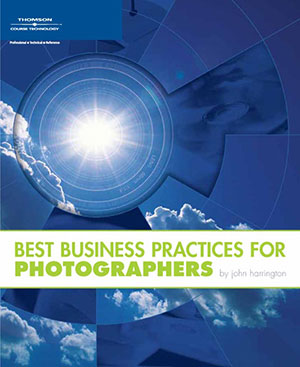

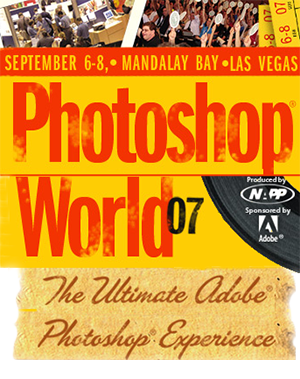 Well, I'm off to Las Vegas for PhotoshopWorld this Friday to make a presentation. I'm listed as a Special Event, from 7pm until 9pm, just before Scott's Midnight Madness program, which starts at 10. Plus, there aren't many other programs happening that conflict with mine, so go get takeout and come by.
Well, I'm off to Las Vegas for PhotoshopWorld this Friday to make a presentation. I'm listed as a Special Event, from 7pm until 9pm, just before Scott's Midnight Madness program, which starts at 10. Plus, there aren't many other programs happening that conflict with mine, so go get takeout and come by.
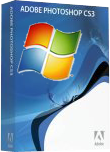
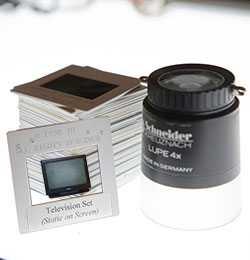 10+ years ago, pre-internet, every month, like clockwork, my agency would send out their monthly "needs list". Sometimes, It'd come with my returns, sometimes, by fax, sometimes with my sales reports, but always old school style, killing trees in the process. In it would be items listed like "goldfish in round bowl on white seamless", or "current model television large tv from different angles." These items were, simply put, requests that had been received by the agency's photo researchers, that resulted in no images being found in the library.
10+ years ago, pre-internet, every month, like clockwork, my agency would send out their monthly "needs list". Sometimes, It'd come with my returns, sometimes, by fax, sometimes with my sales reports, but always old school style, killing trees in the process. In it would be items listed like "goldfish in round bowl on white seamless", or "current model television large tv from different angles." These items were, simply put, requests that had been received by the agency's photo researchers, that resulted in no images being found in the library.  I never did shoot the goldfish, but I did go out and buy a $600 Sony 27" television, set it up in my living room on white seamless, and shot it from - left/right/looking up/looking down, and so forth. I did, of course, also shoot countless in-camera dupes, to ensure the best quality. To date, as a rights-managed image, that single shoot has generated over $10k in revenue, and the tv still works, playing all my Tivo'd shows nowadays.
I never did shoot the goldfish, but I did go out and buy a $600 Sony 27" television, set it up in my living room on white seamless, and shot it from - left/right/looking up/looking down, and so forth. I did, of course, also shoot countless in-camera dupes, to ensure the best quality. To date, as a rights-managed image, that single shoot has generated over $10k in revenue, and the tv still works, playing all my Tivo'd shows nowadays.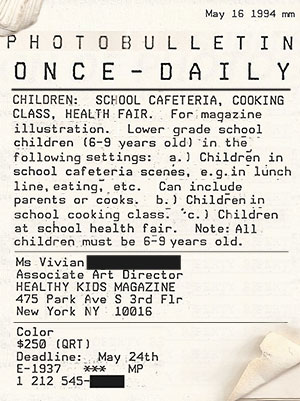 Back in 1994, in tandem with my agency relationship, I was a subscriber to Rohn Engh's Photo Bulletin. He had several flavors, daily, weekly, and bi-weekly. Every day I recieved a fax from Rohn (note I pulled one from my archives, at right), with requests he had received from photo buyers, researchers, and agencies, looking for specific images. The photo buyer would list the specifics of the need: the usage (brochure, magazine illustration, etc) their deadline, and what fee range they would pay for that. Rohn's of course evolved with the times, with his
Back in 1994, in tandem with my agency relationship, I was a subscriber to Rohn Engh's Photo Bulletin. He had several flavors, daily, weekly, and bi-weekly. Every day I recieved a fax from Rohn (note I pulled one from my archives, at right), with requests he had received from photo buyers, researchers, and agencies, looking for specific images. The photo buyer would list the specifics of the need: the usage (brochure, magazine illustration, etc) their deadline, and what fee range they would pay for that. Rohn's of course evolved with the times, with his 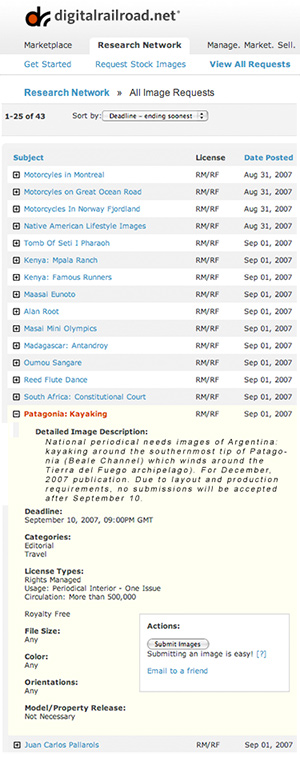
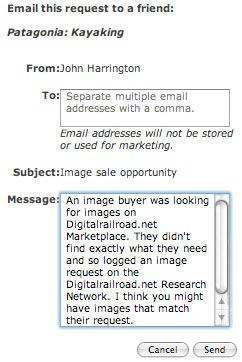 Whenever I talk to friends and colleagues about Digital Railroad and Photoshelter, inevitably the first question people ask is if I am making money, and the short answer is yes, from both of them. However, if your monthly fees entitled you to a qualified list of specific images from buyers on a regular basis, I think this would be a great way to increase the probability of income. Although, now, when you know your friend is an avid kayaker (for example), and they have images of kayaking in patagonia, on the graphic above, where there's the button "Submit Images", there's also a link "email to a friend", which brings up the window to the left.
Whenever I talk to friends and colleagues about Digital Railroad and Photoshelter, inevitably the first question people ask is if I am making money, and the short answer is yes, from both of them. However, if your monthly fees entitled you to a qualified list of specific images from buyers on a regular basis, I think this would be a great way to increase the probability of income. Although, now, when you know your friend is an avid kayaker (for example), and they have images of kayaking in patagonia, on the graphic above, where there's the button "Submit Images", there's also a link "email to a friend", which brings up the window to the left. The Votes Are In, and here's what you'd like to read about:
The Votes Are In, and here's what you'd like to read about: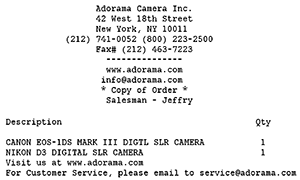 It has been a very dificult past 20 months for me. As a lifelong Nikon photographer, I succumbed to the Canon line of equipment - only temporarily - because of what can only be described as heinous noise at 800 iso and above, and marginally acceptable noise at 640. However, to serve my clients who needed me to work in low light situations, I felt I had no other choice but to shoot Canon. Mind you, I didn't switch. I have used my Nikons for portraits, outdoor photography, and so forth. It just feels right in my hands. Yet, I've had to use the 1Ds Mark II for the high ISO needs, and it's worked great.
It has been a very dificult past 20 months for me. As a lifelong Nikon photographer, I succumbed to the Canon line of equipment - only temporarily - because of what can only be described as heinous noise at 800 iso and above, and marginally acceptable noise at 640. However, to serve my clients who needed me to work in low light situations, I felt I had no other choice but to shoot Canon. Mind you, I didn't switch. I have used my Nikons for portraits, outdoor photography, and so forth. It just feels right in my hands. Yet, I've had to use the 1Ds Mark II for the high ISO needs, and it's worked great.